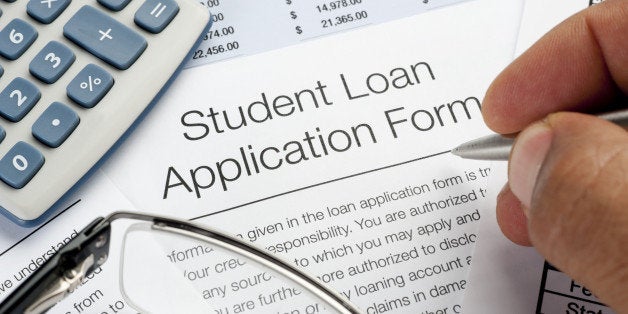
Mark Cuban made waves with his comments about student debt and capping loans. He's a great NBA owner of the Dallas Mavericks, but does he have a good idea for solving the college loan problem?
As reported by CNBC, Mark Cuban blames student loans for dragging down the economy. "The same money that, when you graduated, you used to move out of the house or you went out and spent money that improved the economy and helped companies grow," Cuban said. He claimed that the college would likely use the money to "build a better fitness center at your school."
A trillion dollars in student loan debt might sound like a lot. Then again, it equals what Americans spend on holiday gifts and decorations for Christmas, Halloween, Mother's Day, and back-to-school shopping, according to the National Retail Federation.
Even then, there's no evidence that this is what is holding the economy back, according to research by Liz Weston, a Reuters News columnist. She cites Mark Zandi, chief economist of Moody's Analytics, as saying that student loan debt "is having an impact, but it's on the margin."
She looked at a Brookings Institute report that found student loan borrowers were not having a rougher time than their parents. While the dollar amounts in payment were higher, so were the incomes, making the monthly debt burden the same median percent on income, 4 percent, since 1992, as Weston notes.
Weston also cites Harvard Joint Center for Housing Studies Research Director Chris Herbert, who contends "the typical monthly burden doesn't deter people from buying," Weston writes.
Cuban also has a plan to fix student loans. "If Mark Cuban is running the economy, I'd go and say 'Sallie Mae, the maximum amount that you're allowed to guarantee for any student in a year is $10,000, period, end of story,'" he said in an interview with Inc.
Cuban is not the only one contending that student loans are ruining everything for graduates. A Newsmax story claims that it is keeping young Americans from getting married. "People cannot participate in the American dream because of student debt," says Natalia Abrams, a source for the Newsmax story. "If you owe $100,000 to $150,000 in student loans, you're paying $1,000 to $1,500 a month. It's cost prohibitive. Everything from saving for a home to saving for retirement is off the table."
That would be a problem, if most students were graduating with that level of debt. But they aren't. According to the Federal Reserve Bank of New York Consumer Credit Panel and Equifax, only about 3 percent of borrowers have loans above $100,000. In fact, 40 percent of student loan borrowers take loans of less than $10,000, while another 30 percent take on loans between $10,000 and $25,000. Another 17.7 percent have loans ranging between $25,000 and $50,000, with less than 10 percent making up loans between $50,000 and $99,999.
Additionally, New York Times guest columnist Mark Kantrowitz found most of these higher-end loan recipients were graduate students.
The smarter thing to do is perhaps focus on where loan defaults are occurring, not on how much the loans are.
The good news is that the national student loan default rate is declining from 14.7 percent down to 13.7 percent, according to the Washington Post, thanks to greater scrutiny of default rates. It has declined at private non-profit colleges (from 8.2 percent down to 7.2 percent) and public colleges (also declining).
Private for-profit colleges may feel like they are being picked on, but they have much higher default rates than other types of colleges, nearly 20 percent. And there are 21 schools, primarily for-profit schools, with default rates topping 30 percent for three straight years, or having a default rate higher than 40 percent, according to the Washington Post.
For-profits and community colleges get $378 million and $309.4 million in federal loans and Pell grants, compared to the $199 million for private non-profit colleges and $419.6 million public four-year universities get, according to the San Jose Mercury News. Yet this same report showed that for-profit schools and community colleges have default rates that are three to four times higher than private non-profit colleges and public four-year universities.
A USA Today study found 260 schools, mostly for-profit operations or community colleges, with default rates exceeding graduation rates.
Clearly, the student loan issue is important, but it's hardly the economy killer that headlines have made it out to be. As for the solution, we might be better served by distinguishing good loans from bad ones, rather than arbitrarily capping loans.
John A. Tures is a professor of political science at LaGrange College in LaGrange, Ga. He can be reached at jtures@lagrange.edu.
